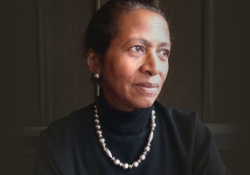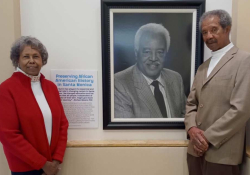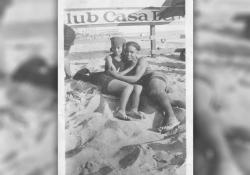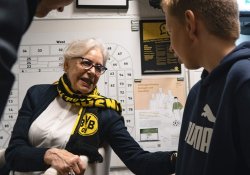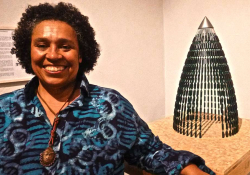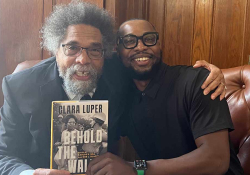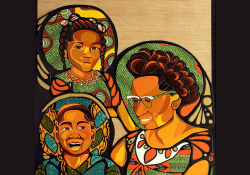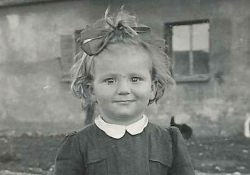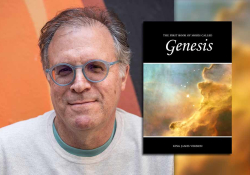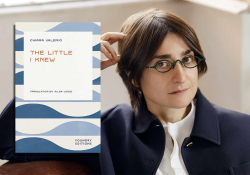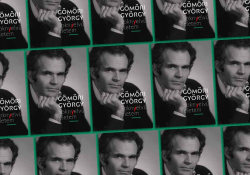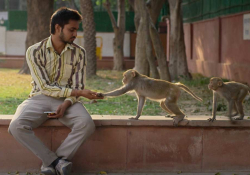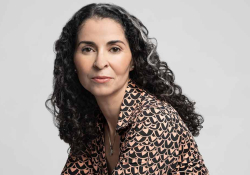Reparations, Restitution, and Restorative Justice in Palm Springs: A Conversation with Areva Martin
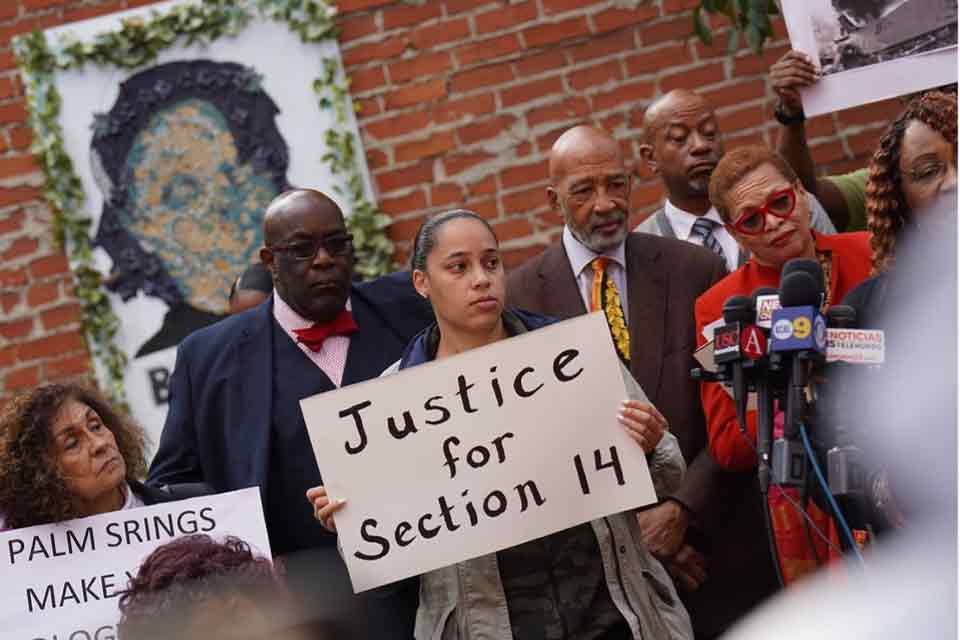
Palm Springs, California, an affluent desert community one hundred miles east of Los Angeles, is known for tourism and for its hospitality industry. But the endless sunshine that draws visitors to the city long hid a dark episode in its history. In the early 1900s, local leaders enacted housing ordinances designed to ensure a racially segregated market that favored white people. As a result of these racist policies, Black people, Mexican Americans, and other nonwhite groups were restricted to a one-square-mile area known as Section 14, situated just east of what is now downtown Palm Springs. With the city’s rising reputation as a resort and a popular retreat for Hollywood celebrities, commercial developers eventually set their sights on Section 14. In the late 1950s and ’60s, under the guise of “slum clearance,” the city forcibly evicted the residents and razed their homes to free up this now-valuable piece of real estate.
Those who were affected by this unjust dispossession had fought for justice and recognition over the years, but with little success. Areva Martin, a nationally recognized civil rights attorney, began working with the nonprofit group Section 14 Survivors in 2022. Two years later, in November 2024, she helped them secure an unprecedented restitution package from Palm Springs, a sum of $27 million to be used in addressing the historic wrongs to harmed residents and their descendants.
I recently spoke with Martin about the Section 14 Survivors and why people should care about their story.
Karlos K. Hill: Who exactly are the Section 14 Survivors?
Areva Martin: These are men and women, most of them now in their seventies and eighties, who lived through one of our nation’s biggest racial atrocities, one that was buried for some six decades. Many people know about the race massacres in Tulsa, Oklahoma, and Rosewood, Florida, and most are familiar with some of the burnings and dispossessions that took place in the South, but we don’t usually associate California with this type of racial injustice. California was not a slave-owning state when it entered the Union, and it has long been known as a bastion of liberalism, so it’s not generally thought of as having engaged in this kind of conduct that is normally associated with the South.
But California has its own ugly history when it comes to institutional racism and discriminatory policies. The Section 14 community was dismantled solely because it didn’t fit with the growing narrative of white Palm Springs as an oasis in the desert and a playground for the rich and famous. Rich and famous folks don’t typically like to live around poor folks, particularly poor folks of color, so in order to attract that kind of clientele, the city needed to displace the Black and brown residents of what had come to be regarded as prime property in the downtown area. The parents of these folks had migrated to the area and helped build the city. They were cooks and chefs and nannies, builders and carpenters, trash collectors and street sweepers, but since they couldn’t live where their white employers lived, they had been relegated to a parcel of land that was owned by the Agua Caliente Indigenous tribe. There they built a flourishing community, or at least it flourished until the city fathers and some outside forces decided that Section 14 had economic value and its current residents needed to go.
As a result, they were burned out and pushed out of their homes, pushed to the outskirts of Palm Springs, pushed into other cities, and basically forbidden to talk about it for sixty years. The city created its own narrative around what happened, and that’s the story that was adopted by the local media. If you’re told something often enough, you will start to believe it, too, so the survivors eventually stopped talking about who they were and what they had contributed. To some extent, the city’s narrative even became their own truth. But when the murder of George Floyd opened a brief window for this country to talk about its racist past, the Section 14 movement was born.
If you’re told something often enough, you will start to believe it, too, so the survivors eventually stopped talking about who they were and what they had contributed.
Hill: Were the Section 14 Survivors given any warning before they were forced out and their properties taken from them? Were they compensated in any way so that they could reestablish themselves elsewhere?
Martin: For the most part, no official notice was provided to them. They recall the mayor at the time, Frank Bogert, and others knocking on their doors and telling them they had to move, because the area had been declared a public nuisance and would be undergoing what we now call “urban renewal,” but there were no legal documents that we could locate. The recordkeeping back then was incredibly sloppy. No court actions were filed, which meant we couldn’t go into the court system and find the usual eviction notices. When you evict someone from a property, you have to go through a whole court process. You have to file an action and give them an opportunity to respond. There has to be a hearing. There has to be due process. There has to be an order issued by a court allowing the sheriff to forcibly remove people.
We know that process did not occur. There are people in the city who will say the families were notified, but even if they did receive some kind of notice, they were not legally notified. To clarify, they had never been allowed to purchase the land they were living on—it was always owned by the Agua Caliente tribe—but the survivors and their parents and grandparents had been allowed to build structures on the land and bring in trailers and mobile homes, so the matter of ownership is clear. The fact that they didn’t own the property doesn’t mean they had no rights. Even a landlord has to go to court and get an order to evict a renter.
With respect to your question about compensation, no money was provided by anyone. In California, if a landlord wants you to move and you’re not in breach of your lease agreement, they must pay you relocation fees to force you out. Paying these families to relocate was an option for Palm Springs, even sixty years ago, but they chose not to do it. They could have built affordable housing for the residents to move to, but they chose to build golf courses instead. The city leaders had an opportunity to do the right thing by these residents at every turn, but they chose not to.
Hill: What happened to the area that used to be Section 14? What does it look like now?
Martin: It was eventually developed: restaurants, bars, townhomes, a convention center, churches, condominiums. It is now a thriving part of downtown Palm Springs, filled with shops and restaurants. There is a new luxury hotel across from a park that was part of Section 14, along with million-dollar condos—everything you can think of that might attract high-end tourists and their money. In other words, it’s very valuable property in a city where 75 percent of revenue comes from hospitality.
Hill: How did you get involved with the Section 14 Survivors?
Martin: Back in 1990, a statue of Mayor Bogert was placed outside City Hall. Because of his role in the Section 14 dispossession, a petition was started in 2020 to have the statue removed. That petition evolved into a much larger campaign, and it was ultimately successful: in the summer of 2022 the city had the Bogert statue removed and placed in storage.
The Section 14 Survivors were active in this process, and the positive outcome empowered them to address the history of Section 14 more generally. They were able to exact an apology from the city council, but when they tried to seek legal counsel regarding restitution, none of the high-profile lawyers they called would take the case. And rightfully so—after all, these actions occurred sixty years ago, and we are governed by statutes of limitations in every state in this country. They did eventually find a retired lawyer who agreed to help them, but he lacked the needed resources and was limited in what he could do.
I found out about the case when I was interviewing someone about Bruce’s Beach. That person said the Section 14 group could really use someone with my expertise and my media presence and relationships. They connected me to Pearl Devers, who was the main plaintiff, and through talking to her I was able to see that there was something to it, something beyond the legal hurdles. So that’s how we got connected.
Hill: Had there been any earlier efforts to rectify the situation?
Martin: There was some activism over the years. Pearl Devers’s father was instrumental in the founding of one of the first NAACP chapters in Palm Springs. He had refused to leave his home as the dispossession was happening. He tried to stay. He tried to rally people to protest. But any efforts back then were quickly shot down. As Black folks, we feel disempowered now, but imagine what it was like trying to fight a white power structure back in the 1960s. Public sentiment was in favor of the city fathers and those who wanted to perpetuate their narrative of Section 14 as a blighted community, an eyesore that needed to be destroyed. I’m told that there were renewed efforts in the 1980s and ’90s, but anyone who tried to bring something forward was denied and ignored.
Hill: A staggering amount of wealth has been created from the dispossession. How did you arrive at $27 million as the appropriate sum to compensate the Section 14 Survivors for what was taken from them and their families?
Martin: It’s important to note that the $27 million represents the value of the agreement between the city and the survivors. A portion of that amount is cash restitution; $20 million was set aside for homeowners assistance and a community land trust; and $1 million was designated for economic development. The agreement also calls for a public monument, the renaming of a park, a day of remembrance, and a commitment on the part of the city to work with the survivors to build a racial and cultural healing center. The settlement reflects issues that were crucial to this community, starting with the loss of housing. Home ownership is the quickest way into the middle class. It’s the quickest way to build equity and create generational wealth. So, access to home ownership was extremely important to the survivors, to help them build back some of that lost generational wealth. That’s how we arrived at the $10 million in homeowners assistance and $10 million in a land trust.
Hill: Was the $5.9 millionin direct compensation also hard-won?
Martin: The amount is significant because there are very few instances where victims of racially targeted attacks have been able to recover monetary compensation. In the broader reparations context, polling of Americans from 2023 confirms that there is an overwhelming belief that African Americans are not entitled to any cash payments for the harm caused by racial atrocities. Many believed that it is difficult to put a dollar amount on such pain. In the context of Palm Springs, efforts to receive cash compensation for any of the losses sustained failed in previous decades. When you consider that history, this monetary settlement amount takes on even more significance.
Hill: What does it mean to the survivors that after so many years of being ignored, of being told that they were the problem, they were able to win this restitution?
Martin: In three short years, they went from squatters to heroes. Pearl Devers and the other Section 14 Survivors did what their ancestors couldn’t do. They did what scores of activists before them couldn’t do. Theirs is a remarkable story of resilience, perseverance, and believing in the impossible. This was a movement led by seniors. These are people who were taught not to challenge the status quo. They did this at great peril. When I started working with this group, many of them were unfamiliar with the concepts of reparations, restitution, and restorative justice. They even felt shy about asking for recognition. They felt like they were being obedient to the rules they were raised by: Life is tough. Don’t complain. Keep your head down and suck it up. And because of that, many had never told the story of Section 14 to their children and grandchildren, let alone talked about it publicly. They didn’t believe they could push back on the established narrative. Yet these relatively poor, disenfranchised people have now forced the city that dispossessed their families to acknowledge their existence.
The story of the Section 14 Survivors is a remarkable story of resilience, perseverance, and believing in the impossible.
Hill: What is next in this journey of healing? Will the community push for that racial healing center? Will they push for other things that you didn’t get but that are still important?
Martin: Healing is a process, and over these last three years, I have witnessed the beginning of that process for the Section 14 group. Through gathering together and helping people reconnect with their past, we restored a community. And now the next generation is committed to continuing that work. I think that funding will flow to the Section 14 nonprofit to enable it to establish the racial justice healing center. I think this community will continue to engage with each other and also share their stories more widely. That is one of the most amazing aspects of this work for me. I watched as the community rallied around this cause. I witnessed people finding their purpose. Three years ago, no one in the community would have thought that $5 million to build a racial justice center was possible. They were asking their members for $30, $50, small contributions to help sustain that nonprofit. Now they’ve probably raised close to a million dollars. So many things have been accomplished that didn’t even seem possible three years ago.
Hill: With your help, the Section 14 Survivors have achieved a tremendous victory. The financial compensation is important, of course, but as you’ve made clear, this undertaking has been about more than money. There’s an air of hope now, a revived feeling of optimism. In a sense, this community has come back to life and also gained a new identity. The resources and guidance you were able to provide changed everything for them. The effects of that reconfiguration have been truly restorative.
November 2024

Areva Martin is the founder and principal of Martin & Martin, LLP, one of Los Angeles’s premier Black, female-owned law firms. Areva is also the founder and president of Special Needs Network, one of the nation’s leading autism and social justice organizations.

